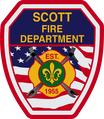Hazardous materials in various forms can cause death, serious injury, long-lasting health effects, and damage to buildings, homes, and other property. Many products containing hazardous chemicals are used and stored in homes routinely. These products are also shipped daily on the nation's highways, railroads, waterways, and pipelines.
Varying quantities of hazardous materials are manufactured, used, or stored at an estimated 4.5 million facilities in the United States--from major industrial plants to local dry cleaning establishments or gardening supply stores
The Emergency Planning and Community Right-to-Know Act requires that detailed information about hazardous substances in or near communities be available at the public's request. The law provides stiff penalties for companies that fail to comply and allows citizens to file lawsuits against companies and government agencies to force them to obey the law.
WHAT ARE HAZARDOUS MATERIALS?
Hazardous materials are chemical substances, which if released or misused can pose a threat to the environment or health. These chemicals are used in industry, agriculture, medicine, research, and consumer goods. Hazardous materials come in the form of explosives, flammable and combustible substances, poisons, and radioactive materials. These substances are most often released as a result of transportation accidents or because of chemical accidents in plants.
HAZARDOUS MATERIALS WARNING PLACARDS
The U.S. Department of Transportation employs a labeling and placarding system for identifying the types of hazardous materials that are transported along the nation's highways, railways, and waterways. This system enables local emergency officials to identify the nature and potential health threat of chemicals being transported into your community. Were a chemical accident to occur in your community, local emergency officials and the fire department would be able to determine the proper emergency response procedures for the situation by the type of placard or warning label.
Varying quantities of hazardous materials are manufactured, used, or stored at an estimated 4.5 million facilities in the United States--from major industrial plants to local dry cleaning establishments or gardening supply stores
The Emergency Planning and Community Right-to-Know Act requires that detailed information about hazardous substances in or near communities be available at the public's request. The law provides stiff penalties for companies that fail to comply and allows citizens to file lawsuits against companies and government agencies to force them to obey the law.
WHAT ARE HAZARDOUS MATERIALS?
Hazardous materials are chemical substances, which if released or misused can pose a threat to the environment or health. These chemicals are used in industry, agriculture, medicine, research, and consumer goods. Hazardous materials come in the form of explosives, flammable and combustible substances, poisons, and radioactive materials. These substances are most often released as a result of transportation accidents or because of chemical accidents in plants.
HAZARDOUS MATERIALS WARNING PLACARDS
The U.S. Department of Transportation employs a labeling and placarding system for identifying the types of hazardous materials that are transported along the nation's highways, railways, and waterways. This system enables local emergency officials to identify the nature and potential health threat of chemicals being transported into your community. Were a chemical accident to occur in your community, local emergency officials and the fire department would be able to determine the proper emergency response procedures for the situation by the type of placard or warning label.
